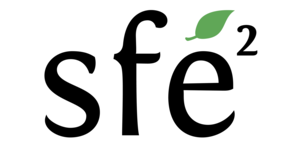Recent evolutionary radiations are ideal settings for studying speciation mechanisms and identifying factors influencing species diversification. The great lakes of the East African Rift system offer habitats with particular ecological and geological conditions, harboring numerous radiations, notably those of cichlid fishes. However, for some organisms, such as the gastropods of the Viviparidae family, the causes and progress of differentiation and diversification are still poorly known (but see Van Bocxlaer et al. 2020). Understanding these processes of population differentiation would give us a better insight into how they can, in the long term, lead to speciation. Afrotropical viviparids exhibit several evolutionary radiations currently underway in the East African Rift system (see Schultheiß et al. 2014), notably in the Lake Victoria catchment, where seven species are currently described (Brown, 1994). The study of this radiation, on a population genomic scale, would enable us to understand what are the drivers of their differentiation. This internship is part of a broader project, which will allow to link the results obtained in the traineeship to the diversification dynamics of these species, and to cross-reference these results with more diversified data sets (e.g., morphology or ecology).
Objectives:
The aim of this traineeship will be to use target enrichment data to produce a dataset of genetic variants (i.e., Single Nucleotide Polymorphism, SNP) and to study the differentiation processes of African viviparids populations in the Lake Victoria basin. The objectives will be: (i) to characterize genetic diversity and variation within populations, and (ii) to study spatial patterns and genetic structure between the different gene pools identified before. These analyses of genetic diversity and population structure will use different methods and software (e.g., PCA, R, PIXY, STRUCTURE, etc).
Depending on the student’s interest and the time availability, it will be possible to examine their demographic history, and connect the results with morphological and/or ecological data, or to put the results into a macro-evolutionary perspective.
Data available:
– Sequencing of ORFs by target enrichment (~ 1,700 ORFs) for a dataset of 18 populations (133 individuals) within Lake Victoria basin.
– Reference genetic sequence for variant calling analyses.
Expected profile:
Master’s 2 student with experience in population genomics or quantitative genetics, with an interest in analyzing large datasets. Notion of bioinformatics, and Linux environment (Bash) is desirable.

Commentaires récents